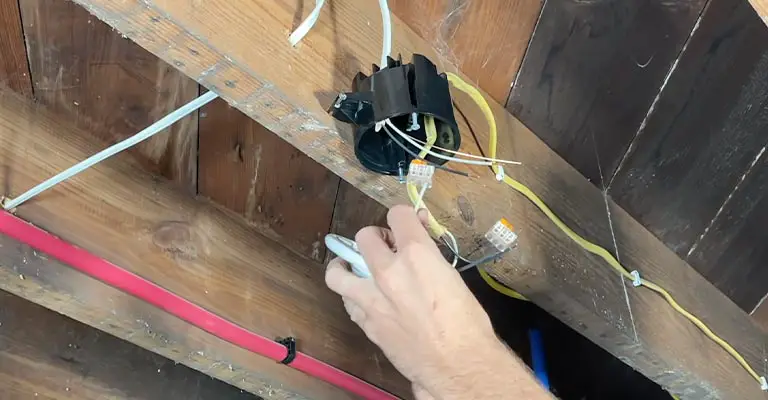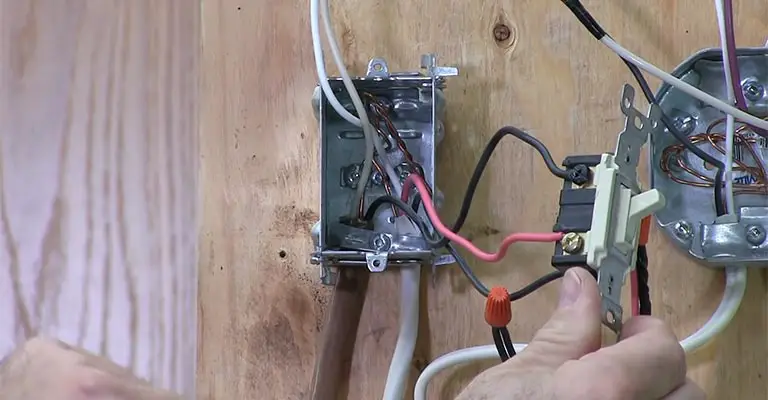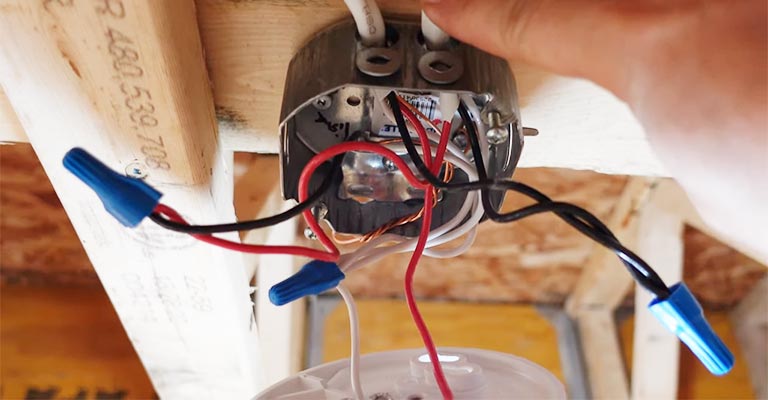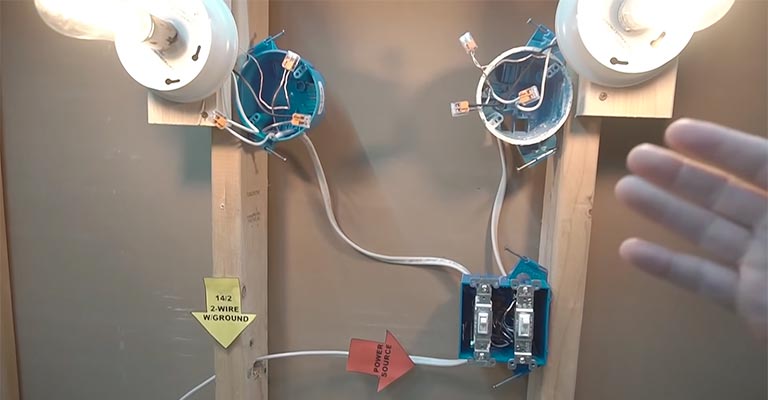If you’ve ever found yourself in a situation where you need to connect a 3-wire LED light to a 2-wire power source, you might have wondered about the best approach to make this connection work.
Whether it’s for a DIY lighting project, replacing a fixture, or any other electrical task, it’s important to ensure a safe and effective connection.
A light fixture usually comes with three wires: black, white, and green. The black (hot) wire should be connected to the black (live) wire that supplies the home’s electrical system.
A neutral connection should also be made for the white (neutral) wire. There are two wires that are required for the light to operate, and a third for your protection and safety.
Thus, you should connect the green (ground) wire to a metallic component of the electrical box. Here is a short guide on connecting a 3-wire light to a 2-wire one.
Guidelines For Safety
The main circuit breaker for that circuit should be turned off before you work on any wiring. You can check whether the circuit has been cut off by using a voltage tester or voltmeter.
How To Identify The Three Wires
It is vital that you understand the purpose of each of the three wires before making any electrical repairs to your main AC supply or any other electrical components for that matter.
Be sure not to connect the wrong wire to the wrong point or misidentify the three wires. In any other case, a short circuit could occur, resulting in a serious risk of electric shock and a fire.
Know The Color Codes
Depending on the country, color codes may differ. U.S. domestic electricity is supplied in single phase as follows:
The ground wire is the bare copper or green wire. Emergency ground connections can be made through it if a local ground connection isn’t available.
White wires are neutral wires. Power stations rely on it for a ground connection and a return path for electricity.
Black wires are hot wires. Electricity is carried from the main electrical panel to the source through this cable.
Wiring a 3-Wire Light to a 2-Wire Connection

There are many situations where a 3-wire light needs to be wired to a 2-wire connection.
Nonetheless, some people are confused about which two wires should be connected to the main electric supply, and what should be done with the third wire.
It would be easier for you to understand what each wire does (hot, neutral, and ground) if you knew their functions.
The following steps should be followed if you are connecting a 3-wire light to a 2-wire circuit:
- A hot (black) wire from the light fixture must be connected to a hot wire from the main supply.
- You need to connect the neutral wire of the light fixture to the neutral wire of the main supply.
- To provide a safe ground connection for the light fixture, connect the ground wire (bare or green) to a metallic part of the electrical box.
The black and white wires are essential to the operation of the light. Technically, you do not need to connect the ground wire to anywhere, as the light will still work without it. But it’s there for a reason.
Safety and protection are the reasons. Therefore, leaving or terminating it is not recommended. In addition, you might end up damaging the light fixture if you do this since you increase your risk of getting an electric shock.
2-Wire and 3-Wire Light Fixtures

Often, an older US home still has 2-wire light fixtures or a non-grounded main supply, which leads to the confusion with the extra wire.
It is not possible to connect a ground wire to these 2-wire fixtures since they come with only the hot and neutral wires.
Because there are only two terminals on a 2-wire fixture, connecting the two hot and neutral wires should be no problem.
It’s always the ground wire that remains, because it’s the only terminal that never exists.
Light fixtures with three wires and terminals usually include a third ground wire as well. Grounding is simply achieved by connecting the ground wire to the third terminal. As a result, you shouldn’t have any problems in this situation.
How to Attach a Two-Wire Lighting Fixture to a Three-Wire Supply

Using a three-wire power supply cable to power a two-wire light fixture is not something you see every day. Cables with three wires typically carry 110- to 120-volt hot and neutral wires.
As long as the circuit breaker does not exceed 15 amps and the wire size does not exceed 14 gauge, the lighting could be added to the three-wire cable. With the right tools, materials, and knowledge of electrical circuits, you can do the work.
Step 1
Disconnect the three-wire cable intended for the light fixture at the main panel by turning off its circuit breaker. Make sure the breaker is marked or otherwise marked to alert others that work is being done.
Step 2
Use a voltage tester to verify that there is no power flowing through the wires. The tester’s probes should be placed on the white neutral wire and the black wire, respectively. Test the red wire with the white neutral as well.
Step 3
Use wire cutters to remove any exposed copper from the red wire. Tighten the wire nut clockwise by hand by placing it over the end of the wire. Using electrical tape, wrap the wire nut clockwise around the red insulation, overlapping the tape.
Step 4
The remaining wires need to be stripped of insulation by 1/2 inch using wire stripping pliers.
Step 5
A wire nut should be used to connect the black hot wire to the black wire of the light fixture. Using your hands, tighten clockwise.
Importance of the Ground Wire
You have two options when wiring a 3-wire light switch to a 2-wire connection:
- Ground wires should be terminated without being connected, i.e. cut and insulated at their ends.
- You need to connect the ground wire to an electrical box’s metallic part, as you now know.
- Ground wires are sometimes left out by some people. There is a problem with this practice. If you knew about its safety role, you wouldn’t do this.
- Ground wires serve the primary purpose of providing an additional path for current to travel.
The neutral (white) wire is the first choice of path for the return current, as you know. It may, however, seek another shorter path to reach the ground during an electrical overload. Ground wires come in handy in this situation.
In the absence of the ground wire, electricity may choose to travel through your body, causing you to get shocked. It is therefore very important to have a ground wire for safety reasons.
Is it Safe to Not Connect the Ground Wire?
It is possible to operate the light without the ground wire connected, but it’s not recommended because it will not provide safety. If you touch the light fixture, you may receive an electric shock or even be electrocuted.
Without a proper ground connection, the light fixture itself could be damaged during an electrical overload. The ground wire of the light fixture should always be connected to a metallic part of the electrical box.
Typically, these types of metal electrical boxes accompany 3-wire connections. Thus, the ground wire should be connected to one of the screws on the metal box. Your light fixture circuit will have a proper ground connection.
Final Words
With the right knowledge and precautions, connecting a 3-wire LED light to a 2-wire power source is a manageable task.
If you follow the instructions in this guide, you will be able to connect your LED lighting safely and functionally.







